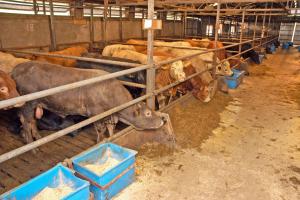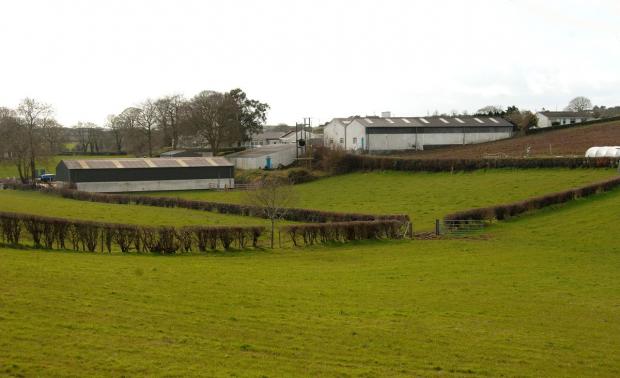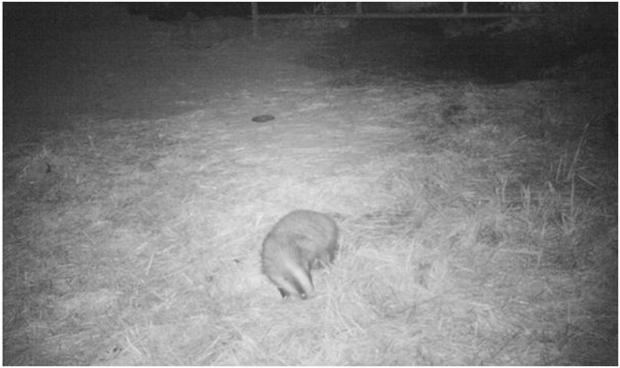A DARD funded research project recently completed by the Agri-Food and Biosciences Institute (AFBI) has reported for the first time the activity of different wildlife species at night in farmyards in Northern Ireland.

The results suggest that several species are regular visitors to yards and that we need to increase biosecurity levels in farmyards to minimise the risk of disease spread.
The impetus behind the research project was related to the potential for the spread of diseases such as bovine tuberculosis between wildlife species, particularly badgers, and livestock on farmyards in Northern Ireland.

“Despite a very real concern about the levels of wildlife activity in farmyards and the potential that this may have in terms of the transmission of various diseases to livestock, we currently have no data on what wildlife species are entering farmyards, how often they visit and what their behaviour is in terms of contact with cattle” said Dr Declan O’Mahony (AFBI), who led the research project with a team of scientists.
“We require basic information on the level of wildlife intrusion into farmyards so that we can assess its importance in terms of the potential for disease transmission and also to consider overall biosecurity levels”.
Farm biosecurity is the prevention of disease-causing agents entering or leaving farms where they can pose a risk to farm animals, other animals, humans, or the safety and quality of a food product.
The research project, which was funded by the Department of Agriculture and Rural Development, was conducted in 11 different farmyards in Co. Down. Farmyards were monitored over a period of 12 months to determine badger activity primarily, but also other animal species intrusion levels. This was the first study of its kind anywhere on the island of Ireland.

“With the support of local farmers who allowed us to place infra-red motion activated cameras at each building entrance in their farmyards we monitored wildlife activity at 83 farm buildings over the course of one year. Most people are probably familiar with these types of cameras from wildlife shows. They are triggered by movement and take a photograph with the date and time that it was taken. During the study over 500,000 images were taken and it was a major task to database and collate images as each one had to be checked for the presence of a wildlife species and the data recorded”.
The results were very interesting in terms of level of badger activity in farmyards in Northern Ireland. “There was a lot of variation in terms of the number of times badgers visited farmyards” said Dr O’Mahony.
“Some farmyards were visited relatively often and others were not visited at all, which shows how it important it is to have local and site-specific knowledge on badger activity. In 4 out of the 11 farmyards in the study, badgers visited on more than 10 nights throughout the 12 month study duration. Two of the farmyards were not visited at all. Badgers tended to visit farmyards more during spring and during periods of low temperature, which may be related to the availability of natural food resources” commented Dr O’Mahony.
When badgers visited farmyards they tended to repeatedly visit the same area and building types and had relatively short duration visits of less than 2 minutes. Badgers preferred to visit parts of the farmyard that were associated with feedstuff such as meal stores, and generally tended to avoid parts of the farmyards associated with cattle housing. The data also suggested that there may have been only a few badgers visiting the same farms and that it may not have been a behaviour that was common amongst all badgers in the area.
“In the most visited farmyard, 90% of badger visits were by the same individual badger, which corresponds to what we know about badger feeding behaviour – they tend to forage alone and not in groups” said Dr O’Mahony. As well as badgers, the other species frequently seen in farmyards were rats, mice, cats and foxes, all of which can carry various diseases.
Full results of this research project are published in The Veterinary Journal.
“From a biosecurity standpoint these results highlight the need for increased awareness and proactive approaches to reduce wildlife intrusions into farmyards. This may reduce the potential for disease spread between wildlife species and livestock in farmyards, which can only help in terms of increasing overall cattle herd health” concluded Dr O’Mahony.
A copy of the project report and biosecurity advice is available on the DARDNI website:
www.dardni.gov.uk/badger-cattle-proximity-report.pdf and
www.dardni.gov.uk/biosecurity-measures-tb-leaflet.pdf
Notes to editors:
AFBI carries out high-quality technology research and development, statutory, analytical, and diagnostic testing functions for DARD and other Government departments, public bodies and commercial companies.
AFBI's Vision is “Scientific excellence in Northern Ireland … serving the world”.
This project was funded by the TB/Brucellosis Policy Branch of the Department of Agriculture and Rural Development.
All media enquiries to AFBI Press Office
Latest news
- AFBI Open days – How to make the most of early life to improve your future dairy herd 07 May 2024
- Public Appointment Vacancy - Chairperson to the Board of the Agri-Food and Biosciences Institute (AFBI) 02 May 2024
- Johnes Disease in Cattle 01 May 2024
- AFBI makes major announcement on the building of a new research vessel for Northern Ireland 17 April 2024
